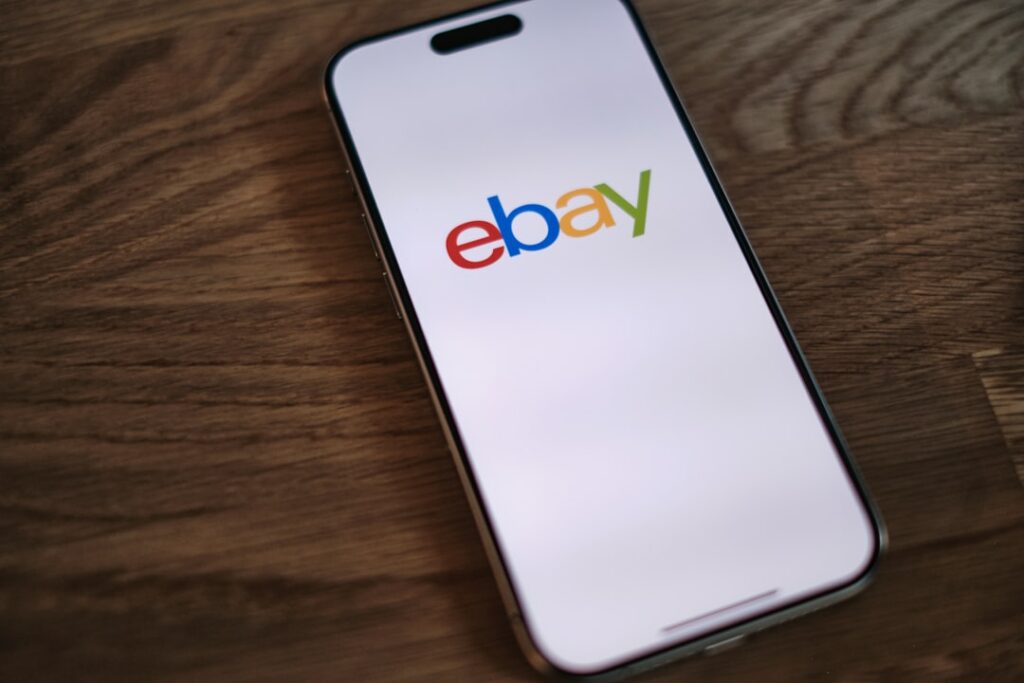Step 1: Research and Source Products for Resale
Identify Profitable Niches and Products
Begin by exploring eBay’s “Sold Listings” filter. This is your most powerful tool for understanding what items are actually selling and for how much. Search for categories you’re familiar with or have an interest in, such as vintage electronics, collectible toys, designer clothing, or even specific parts for common appliances. Pay close attention to the selling price, the number of bids (if applicable), and the condition of the sold item. Compare these sold prices to your potential acquisition costs. Look for items with a consistent sales history and a good profit margin (selling price minus acquisition cost, shipping, and eBay fees). Tools like Terapeak (available with an eBay Stores subscription) can provide more in-depth historical sales data, including average selling prices, sell-through rates, and best-selling formats.
Consider seasonal trends as well. For example, holiday decorations sell well in Q4, while gardening tools might see a spike in spring. Attending local estate sales, thrift stores, garage sales, and even online classifieds (like Facebook Marketplace or Craigslist) can reveal undervalued items. Always have your eBay app ready to check “sold listings” on the spot before making a purchase decision.
Source Products Ethically and Cost-Effectively
Once you’ve identified profitable niches, focus on acquiring inventory. Thrift stores (Goodwill, Salvation Army, local charities) are excellent starting points for low-cost items. Look for brand names, vintage items, and anything in excellent or new condition. Estate sales often yield higher-value items, but require more upfront research and competitive bidding/negotiation. Garage sales are hit-or-miss but can provide incredible deals if you arrive early. Online sources like Facebook Marketplace, Craigslist, and even local auction sites can be valuable, but exercise caution regarding scams and always arrange safe, public meetups for transactions.
For new items, consider wholesale suppliers or liquidation sales. Research reputable distributors for specific product categories. For example, if you’re selling electronics, look for authorized resellers or surplus liquidators. Always calculate your “landed cost” – the product cost plus any shipping fees to get it to you – before committing to a purchase. Maintain a spreadsheet to track your inventory, acquisition costs, and potential selling prices to ensure profitability.
Step 2: Optimize Your eBay Listings for Maximum Visibility
Craft Compelling Titles and Descriptions
Your listing title is critical for search visibility. Use all 80 characters available. Include relevant keywords that buyers are likely to search for, such as brand name, model number, item type, color, size, and condition. For example, instead of “Old Camera,” use “Vintage Nikon F2 Photomic 35mm SLR Film Camera w/ Nikkor 50mm f/1.4 Lens EX.” Avoid keyword stuffing or using irrelevant terms, as this can lead to penalties from eBay or frustrated buyers.
The description should be detailed and honest. Start with a brief, engaging summary of the item. Then, provide specific details about its condition (new, used, excellent, good, fair, for parts/repair), dimensions, features, and any known flaws or imperfections. Be transparent about wear and tear. Use bullet points for readability and break up long paragraphs. Mention what’s included (e.g., “Includes original box and manual”) and what’s not. Reiterate your shipping policy, return policy, and payment terms clearly. Use basic HTML (like <b> for bolding and <ul> for lists) to improve readability, but avoid overly complex or flashy designs that can slow loading times on mobile devices.
Capture High-Quality Product Photos
Photos are paramount on eBay. Aim for a minimum of 5-7 high-resolution photos, showcasing the item from multiple angles. Use natural, soft, diffused light, or invest in an inexpensive light tent and LED lighting kit. A plain, neutral background (white or light gray works best) ensures the product stands out. Clean the item thoroughly before photographing to remove dust, smudges, or debris.
Include close-up shots of any unique features, brand labels, serial numbers, and, importantly, any flaws or damage. If a button is missing, photograph it clearly. If there’s a scratch, show it. This transparency builds trust and reduces the likelihood of returns due to “item not as described.” For clothing, show front, back, inside tags, and any measurements (e.g., pit-to-pit, length). For electronics, show the item powered on (if applicable) and all ports. Ensure your photos are well-lit, in focus, and correctly oriented. eBay allows you to upload up to 24 photos for free; utilize this to your advantage.
Step 3: Manage Sales and Provide Excellent Customer Service
Process Orders Efficiently and Securely
Once an item sells, prompt processing is key. eBay expects sellers to ship within the stated handling time (e.g., 1 business day, 2 business days). Package items securely using appropriate materials: sturdy boxes, bubble wrap, packing peanuts, and strong packing tape. For fragile items, double-boxing is recommended. Always consider the item’s fragility and weight when selecting packaging. Purchase shipping labels directly through eBay, as this automatically uploads tracking information to the buyer and provides seller protection.
Choose the most cost-effective yet reliable shipping method. For lighter items, USPS First Class Package is often cheapest. For heavier items, USPS Priority Mail, FedEx Ground, or UPS Ground are common choices. Compare rates on eBay’s shipping calculator. Insure valuable items and consider requiring a signature confirmation for high-value sales to protect against “item not received” claims. Keep detailed records of tracking numbers and shipping costs.
Communicate Promptly and Professionally with Buyers
Excellent communication fosters positive feedback and repeat business. Respond to buyer inquiries within 24 hours (preferably faster). Be polite, helpful, and clear in your responses. If there’s an issue with a shipment (e.g., delay), proactively inform the buyer with updates. After an item ships, send a polite message confirming shipment and providing the tracking number (though eBay does this automatically, a personal touch is appreciated).
Should a buyer have a problem (e.g., item not as described, damaged in transit), address it calmly and professionally. Offer solutions like a partial refund, full refund upon return, or replacement (if you have one). Avoid escalating disputes; most issues can be resolved amicably before needing eBay’s intervention. A positive resolution to a problem can often lead to a more satisfied customer than if there was no problem at all. Always leave positive feedback for buyers who pay promptly and communicate effectively; many buyers will reciprocate, which boosts your seller reputation.
Step 4: Scale Your eBay Business and Maximize Profits
Reinvest Profits and Expand Inventory
To grow your eBay business, consistently reinvest a portion of your profits back into inventory. As you gain experience, you’ll better understand which items sell quickly and for good margins. Use this knowledge to source larger quantities of profitable products. Consider diversifying your inventory into related niches that you’ve identified as profitable. For example, if you’re successful with vintage cameras, you might expand into vintage camera accessories or even darkroom equipment.
As your volume increases, explore bulk purchasing discounts from suppliers. Attend trade shows or wholesale markets if applicable to your niche. Don’t be afraid to experiment with slightly higher-priced items if your research indicates strong demand and profit potential. Continuously analyze your sales data to identify trends and adjust your sourcing strategy accordingly. Efficient inventory management – knowing what you have, where it is, and its cost – becomes crucial as you scale.
Utilize eBay Tools and Analytics for Growth
eBay provides a suite of tools to help sellers manage and grow their businesses. If you’re selling regularly, consider subscribing to an eBay Store. Store subscriptions offer lower final value fees, access to advanced selling tools like markdown manager, promotional listings, and detailed sales reports (Seller Hub). Seller Hub is a powerful dashboard that provides insights into your performance, including sales trends, listing views, conversion rates, and detailed breakdowns of fees.
Regularly review your “Seller Standards Dashboard” to ensure you’re maintaining “Above Standard” or “Top Rated Seller” status. These statuses offer benefits like higher search placement and final value fee discounts. Use “Promoted Listings” strategically for items that need a boost in visibility, especially new or competitive inventory. Experiment with different ad rates and monitor their effectiveness. Leverage “Terapeak” (included with some store subscriptions) for in-depth market research to identify new opportunities and optimize pricing. Continuously learn about new eBay features and policies to stay competitive and maximize your selling potential.
FAQ: How do I handle returns on eBay?
eBay has a buyer-friendly return policy. If you offer returns, clearly state your terms (e.g., 30-day returns, buyer pays return shipping). If a buyer opens a return case, respond promptly. For “not as described” cases, you’ll generally be required to accept the return and pay for return shipping. For “buyer’s remorse” returns (e.g., “changed mind”), if you offer returns, the buyer typically pays return shipping. Once the item is returned, inspect it to ensure it’s in the same condition as sent. Process the refund through eBay. Clear communication and a fair approach are key to maintaining good seller standing.
FAQ: What are eBay fees like?
eBay charges several types of fees. The primary ones are insertion fees (for listing items, though many sellers get a certain number of free listings per month) and final value fees (a percentage of the total sale amount, including shipping, charged only when an item sells). These percentages vary by category (typically 10-15%). There are also fees for optional upgrades like subtitles, bolding, or promoted listings. eBay Store subscribers often pay lower final value fees. Always factor these fees into your pricing to ensure profitability.
FAQ: How do I protect myself from scams as an eBay seller?
The best protection is to always follow eBay and PayPal’s seller protection guidelines. Ship only to the address provided by eBay/PayPal at checkout. Use tracking and signature confirmation for high-value items. Never ship before payment clears. Be wary of buyers asking you to ship to a different address or pay outside of eBay. Document everything, including item condition before shipping (photos/videos). If a buyer claims an item wasn’t received, use your tracking information. If a buyer claims an item is “not as described,” request photos of the issue. Most issues are legitimate, but staying informed and cautious is important.
FAQ: How long does it take to start making money on eBay?
This varies greatly depending on your product sourcing, pricing strategy, and the time you dedicate. Some sellers can make their first profit within days of listing their first item. However, building a sustainable and significant income takes time, consistent effort, and learning. Expect to spend several weeks or months researching, sourcing, listing, and refining your process before seeing substantial and consistent profits. Patience, persistence, and continuous learning are key to long-term success.




